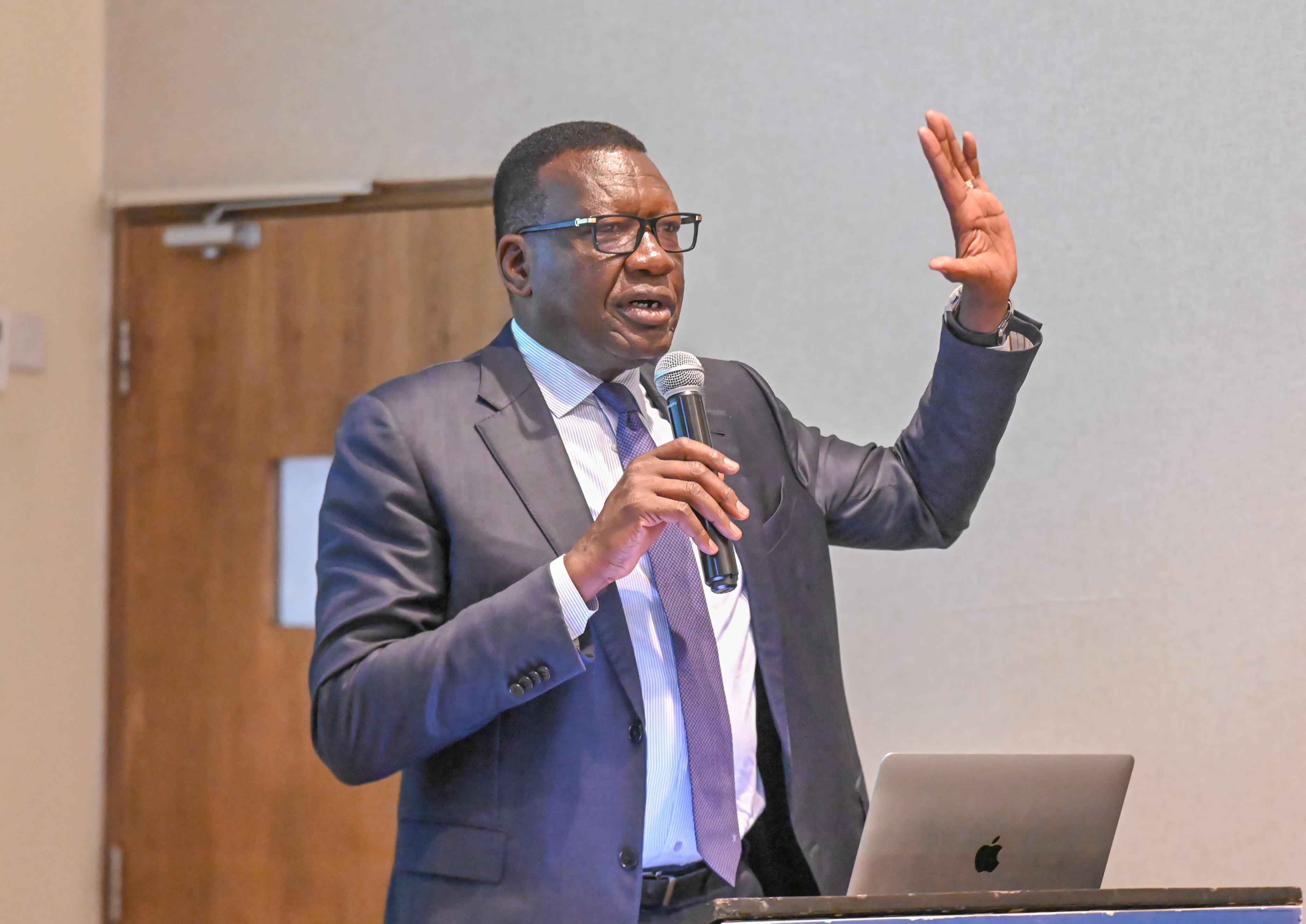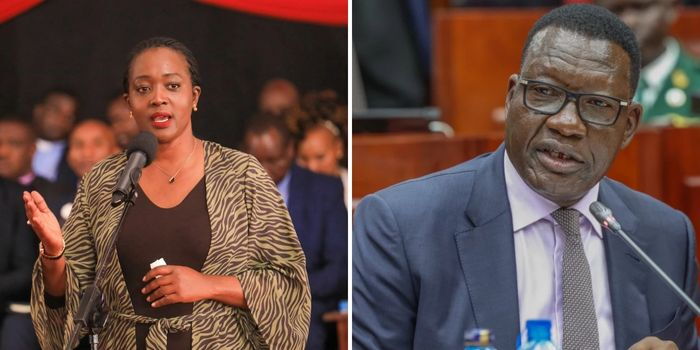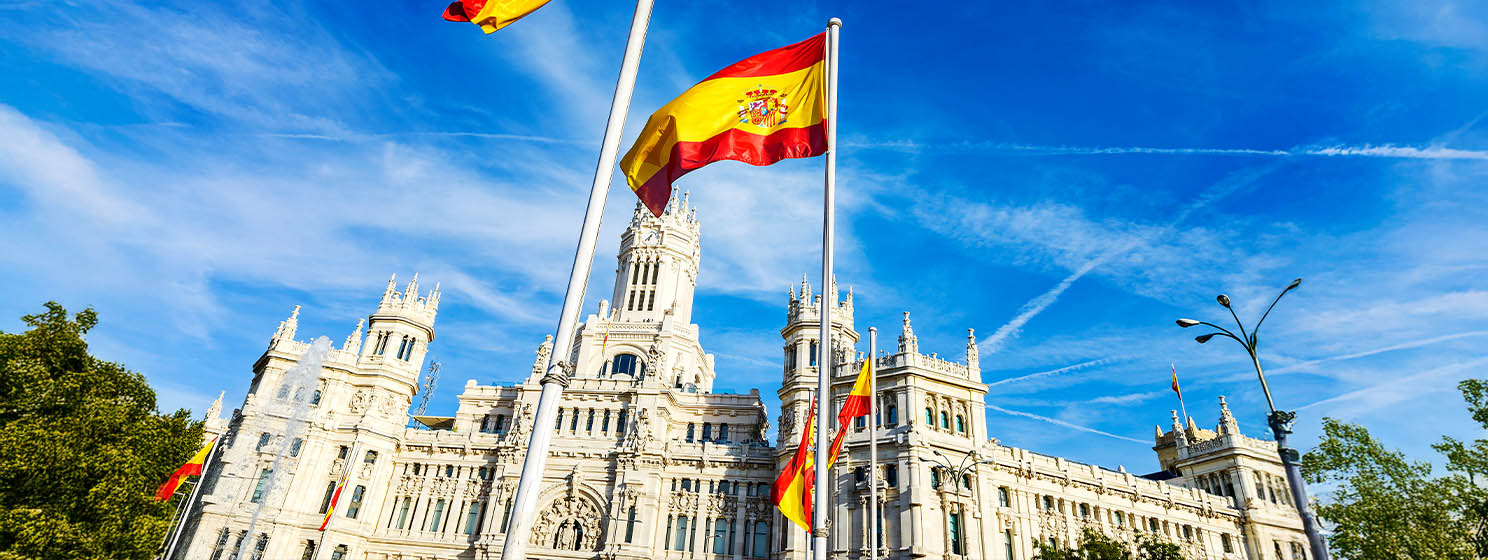Kenya says closing in on SGR extension funding as Uganda, DRC commit to projects

KENYA is closing in on financing for the extension of the Standard Gauge Railway to Malaba, Roads and Transport CS Davis Chirchir has said, with construction expected to commence in September.
This, as Uganda yesterday also announced the commencement of its project which will be linked with the Kenyan line at Malaba, for onwards connectivity to other landlocked countries served by the Northern Corridor with DR Congo becoming the latest to join the project.
Uganda Railway Corporation managing director Benon Kajuna yesterday said the country has already paid the government’s 15 per cent funding for the project to the contractor, with the initial construction phase currently underway.
“We expect to complete the funding process by December but the project has partially begun,” Kajuna told ministers from the region at the Northern Corridor Transit and Transport Coordination Authority’s 37th meeting of the Council of Ministers, in Nairobi.
Chirchir said Kenya has also commenced compenaation of individuals affected by the project which will run through Narok, Bomet, Nyamira, Kisumu and finally Busia county.
Feasibility and Environmental and Social Impact studies have so far been completed, with Chirchir affirming Kenya’s commitment to develope the project concurrently with Uganda.
The 475-kilometre line SGR phase 2B (Naivasha-Kisumu) and 2C (Kisumu-Malaba) is estimated to cost about $5 billion (Sh645.7 billion).
“We are currently doing the compensation of the people on the corridor. We are basically working together on a very synchronised manner. If we unlock funding today, we could be breaking ground in the next few months ahead of our colleagues but not so much to say we are competing, we must be synced,” Chirchir said.
Uganda is doing an electric SGR line between Kampala and Malaba and later towards the border with Rwanda. DR Congo has also committed to develope an SGR line which will see a seamless rail transport from the Port of Mombasa to the hinterland, as part of a regional plan to enhance trade and movement of people.
Kenya has been seeking funds from investors with a keen eye on China which was behind the Mombasa-Nairobi SGR line, completed in 2017 at a cost of Sh327 billion, before being extended to Suswa (Naivasha) – Phase 2A at a cost of 150 billion.
“We have a framework where we are seeking to basically commercialise aspects which are profitable. We want to build the rail and get investors to do the rolling stock and concession the freight,” Chirchir said, noting that the government is keen not to burden taxpayers, but rather bring on bord strategic investors.
The SGR will compliment road, ports and lake transport along the 1,700 kilometre-long Northern Corridor that runs between Mombasa (Kenya), Uganda Rwanda, Burundi and Eastern DRC.
It remains the most preferred for transit goods by traders compared to the 1,300 kilometre-long Central Corridor that serves Tanzania, Rwanda, Burundi, Uganda and Eastern D.R. Congo, with an exit and entry point at the port of Dares-Salaam.
Kenya’s Treasury CS John Mbadi has proposed an allocation of Sh38 billion for expansion of railway transport and its infrastructure in the 2025-26 financial year.
The ministers have meanwhile directed the NCTTCA Secretariat to fast-track the implementation of the Northern Corridor Green Freight Strategy 2030 in order to reduce impact of freight transport activities on environment along the corridor and build sustainable and resilient infrastructure.
The Secretariat is also undertaking elaborate strategies aimed at promoting logistics hubs and cargo consolidation centres to facilitate trade between member countries.
According to Executive Secretary John Deng, it is also keen on enhancing capacity in relevant agencies for PPP projects identification, undertaking studies, profiling and development of projects in member states and promoting Special Economic Zones along the Northern Corridor to support initiatives aimed at transforming the corridor into an Economic Development Corridor.
“There is increasing inter-connectedness of the different transport modes along the corridor, especially with the increased pace of development of the multimodal transport infrastructure involving road, rail, pipeline and inland waterways. We want to grow further,” Deng said.
The 37th Meeting was chaired by Marie Chantal Nijimbere, Minister for Trade, Transport, Industry and Tourism, Republic of Burundi; the current chairperson of the Northern Corridor Council of Ministers who took over from the Republic of Uganda. Other member state countries represented included Burundi, South Sudan and Rwanda.
The countries are key users of the Northern Corridor with Mombasa as the main port of entry and exit for goods. In 2024, the Port of Mombasa handled 40.99 million metric tonnes compared to 35.98 million metric tonnes in 2023.
This translates to 13.9 per cent growth in cargo throughput: representing 73 per cent imports, 12 per cent exports, and 14 per cent transshipments.
“This positive trend is a clear testimony of an interdependency between different modes of transport that will imperatively rely on the simultaneous efficiency of each. Any disruption in either of the modes creates a domino effect that spreads through the transport logistic chain if the system does not have a fall-back response,” Deng noted.
You may also like...
Diddy's Legal Troubles & Racketeering Trial

Music mogul Sean 'Diddy' Combs was acquitted of sex trafficking and racketeering charges but convicted on transportation...
Thomas Partey Faces Rape & Sexual Assault Charges

Former Arsenal midfielder Thomas Partey has been formally charged with multiple counts of rape and sexual assault by UK ...
Nigeria Universities Changes Admission Policies

JAMB has clarified its admission policies, rectifying a student's status, reiterating the necessity of its Central Admis...
Ghana's Economic Reforms & Gold Sector Initiatives

Ghana is undertaking a comprehensive economic overhaul with President John Dramani Mahama's 24-Hour Economy and Accelera...
WAFCON 2024 African Women's Football Tournament

The 2024 Women's Africa Cup of Nations opened with thrilling matches, seeing Nigeria's Super Falcons secure a dominant 3...
Emergence & Dynamics of Nigeria's ADC Coalition

A new opposition coalition, led by the African Democratic Congress (ADC), is emerging to challenge President Bola Ahmed ...
Demise of Olubadan of Ibadanland
Oba Owolabi Olakulehin, the 43rd Olubadan of Ibadanland, has died at 90, concluding a life of distinguished service in t...
Death of Nigerian Goalkeeping Legend Peter Rufai

Nigerian football mourns the death of legendary Super Eagles goalkeeper Peter Rufai, who passed away at 61. Known as 'Do...




